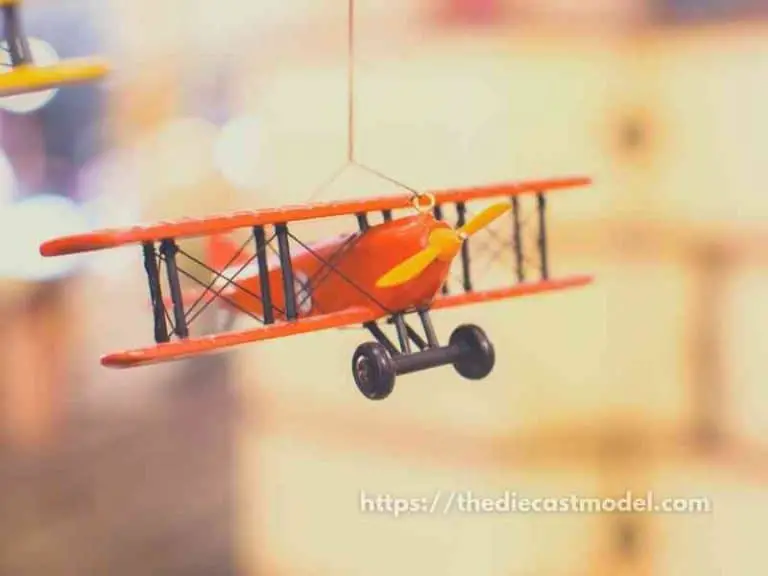Where are Hornby Trains Made? A Look Into Hornby’s Manufacturing History
For many years, Hornby trains have been a favorite among model railroaders. Whether it’s the sleek, streamlined models, or the detailed and accurate reproductions, Hornby trains always seem to capture the imagination of collectors. One of the questions people ask is, where did Hornby manufacture their models?
Most of the Hornby products are now being produced in England, UK. This is because they started shifting their production away from China to the UK in 2012. Therefore, China’s production of Hornby models is slowly being transferred to other countries like UK and India.
This post will talk about the history of Hornby’s manufacturing. We will start with why they transferred their manufacturing to China. Later, we will also discuss why they began to bring back some of their production to the UK and why they started to increase their manufacturing in the UK.

Where is Hornby made?
Most Hornby models are now made in the UK ever since they started to shift their production back to England in 2012. Hornby moved production because managing production in the far east is difficult, and the Chinese factories can’t keep up with consumer demand.
Hornby Railways is a British-owned company that started in Liverpool, England. The company began in 1901 when its founder, Frank Hornby, got his patent on his Meccano toy. Hornby has been around for over a century and is loved by many modelers for their OO scale trains.
Hornby’s long history also means they’ve had many problems in the past. As a company, they’ve been on many difficulties, one of which is production.
For a long time, Hornby has been manufacturing models in the UK. However, there came a time when they had to compete to survive.
Their problems with manufacturing started in the 1980s. Hornby began to have issues as their competitors produced highly detailed and quality models at a lower price. This made their sales go down, and if they didn’t make any changes, the company might go bankrupt.
Upon checking, they’ve found that their competitors could produce cheaper and higher quality models because they shifted their production overseas, particularly in China.
That’s why in the mid-1990s, they started to look for a Chinese toy manufacturer where they could try their service. That’s where they found the Sanda Kan Factory in China.
At first, Hornby was hesitant to try manufacturing overseas. That’s why they tried Sanda Kan to see if they could produce better models at a lower price.
They let Sanda Kan produce their newer Tri-and Holden ‘B12’ 4-6-0. The product reached beyond their expectations since they did a great job detailing, and the price will be a lot cheaper if they maintain their manufacturing in the UK.
The B12 was a success, and its sales made a lot of money to save the company.
China’s cheaper and better manufacturing urged Hornby to shift their production to the Far East.
As a result, the last Hornby Factory in Margate closed in 1999.
Recommended Read: Did you know that there are lots of expensive Hornby models? If you want to know some examples and what made them valuable, please check this post: Are Hornby Models Valuable?
By 2002, Hornby’s entire production team shifted to China. As a result, they were able to produce better models at a lower price.
As a result, they started to invest in manufacturing in other developing countries, such as India.
However, shifting their manufacturing to China is not 100% advantageous to Hornby.
As China started to get richer, the people demanded more wages, and the labor force started to dwindle. Furthermore, the cost of freight from China to the UK is beginning to rise, which means while the production in China is cheaper, the transport cost is becoming more expensive.
People’s demand for higher wages caused a dramatic loss of workforce in Chinese-made models. As a result, many people are starting to switch jobs from factories to office jobs.
Another problem Hornby experienced is managing factories that are thousands of kilometers away from their headquarters is complicated, and their managers needed to travel for 10 days to China. Plus, they are paying for their airfare and accommodations.
Managers are also tired of traveling for 10 or more days just to check and manage their manufacturing plants.
In short, managers started to feel fatigued.
Furthermore, the Chinese labor cost is not getting better as they demand an increase in wages. Their labor market gets lower and lower as their population gets older, and they are switching to office jobs.
In addition, the shipping cost is getting worse year by year.
However, these reasons still didn’t stop Hornby’s production in China. What really made the switch back to the EU market is to help the EU economy and its supply chain.
China is not giving enough models, and the shortage is becoming apparent for Hornby models. The lesser workforce and higher salary demands delayed the delivery of their products.
Furthermore, the EU’s export is decreasing as more companies are outsourcing to other countries. So to help the economy, Hornby decided to give some of its manufacturing back to England.
That’s why, in 2012, Hornby started to get back 10% of its production back to the EU. While the cost of production would still be higher, they said it was worth it since they can properly manage the production instead of sending people for a 10 or more days trip to China which tires their workers.
Some areas of their EU production can now be found in East Sussex.
This was a massive success since even if the labor cost in the UK is higher compared to China, they were able to manage the production since the factories are only a few kilometers away. Furthermore, they didn’t have any problems with the supply as they could easily adjust the number of
models they produce.
It’s a price they are willing to pay for the convenience it gives.
Horny made the right decision since the situation in China is becoming worse.
From 2013 to 2014, China could only deliver 60% of what Hornby ordered. This means Hornby only gets about half of what they ordered. This incredibly stressed Hornby and decided to move its production away from China.
Thus, In 2015, they decided to finally cut the cord by paying £0.5m to end their contract with Sanda Kan, their largest manufacturer in China.
Since their move to EU manufacturing was a success, they started to put their production back to the EU. Furthermore, most of their plastics are made in India instead of China.
Currently, about 70% of their models are made outside China, and the trend is that it will get higher in the future as China’s labor market become scarce.
I hope you enjoyed this little history of Hornby’s manufacturing. I tried to compress its history from why they started to outsource in China and what made them bring their manufacturing back to the EU.
In conclusion, Hornby products are now being produced in the UK due to China not being able to deliver their orders.
This has led to a decline in China’s production of Hornby models.
What’s next? Do you know LGB trains? While Hornby is popular for their OO scale trains, LGB is popular for their G scale trains. The G scale is one of the largest commercially available train scales. If you are interested in knowing about LGB trains, please check this post: Introduction to LGB trains.







